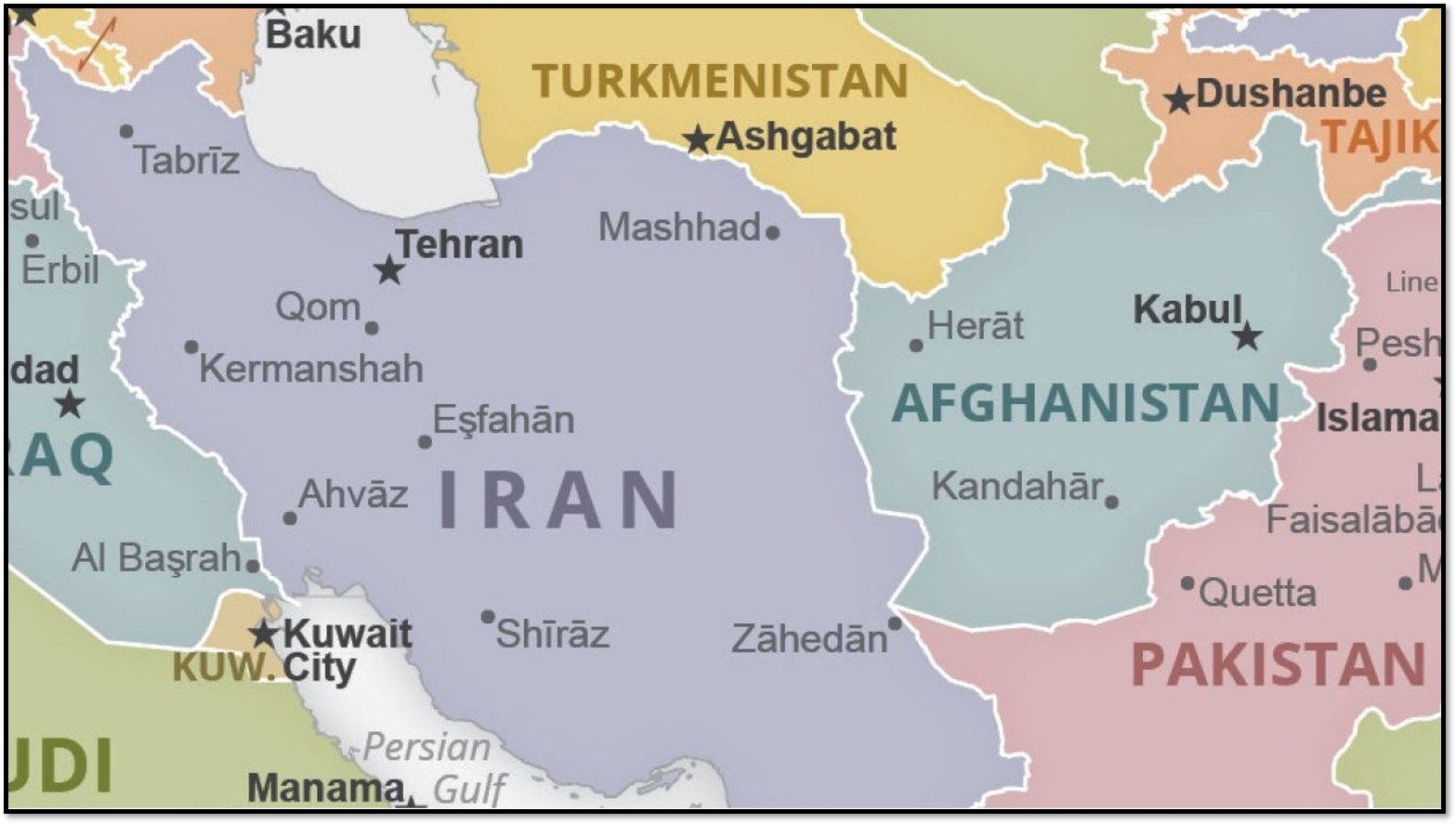 For decades, Iran has faced an ever-growing array of challenges from neighboring Afghanistan, with which it shares a 572-mile border. Iran had long sought the withdrawal of U.S. forces, which President Joe Biden announced on April 14. But the absence of the U.S.-led NATO forces has also created new vulnerabilities for the Islamic Republic. Iran responded to the U.S. policy shift by increasing contacts with both the Taliban and the Afghan government. On July 7, Foreign Minister Mohammad Javad Zarif hosted peace talks with Sher Mohammad Abbas Stanikzai, the Taliban’s chief negotiator, and former Vice President Younus Qanooni representing the Kabul government. Zarif urged them to “take difficult decisions today for the future of their country.” Iran was “ready to assist the dialogue” and to “resolve the current conflicts in the country” following the “failure of the U.S. in Afghanistan,” he said. Zarif subsequently tweeted that the meeting had been “cordial” and promised Iran would stand with Afghans on their road to peace.
For decades, Iran has faced an ever-growing array of challenges from neighboring Afghanistan, with which it shares a 572-mile border. Iran had long sought the withdrawal of U.S. forces, which President Joe Biden announced on April 14. But the absence of the U.S.-led NATO forces has also created new vulnerabilities for the Islamic Republic. Iran responded to the U.S. policy shift by increasing contacts with both the Taliban and the Afghan government. On July 7, Foreign Minister Mohammad Javad Zarif hosted peace talks with Sher Mohammad Abbas Stanikzai, the Taliban’s chief negotiator, and former Vice President Younus Qanooni representing the Kabul government. Zarif urged them to “take difficult decisions today for the future of their country.” Iran was “ready to assist the dialogue” and to “resolve the current conflicts in the country” following the “failure of the U.S. in Afghanistan,” he said. Zarif subsequently tweeted that the meeting had been “cordial” and promised Iran would stand with Afghans on their road to peace.
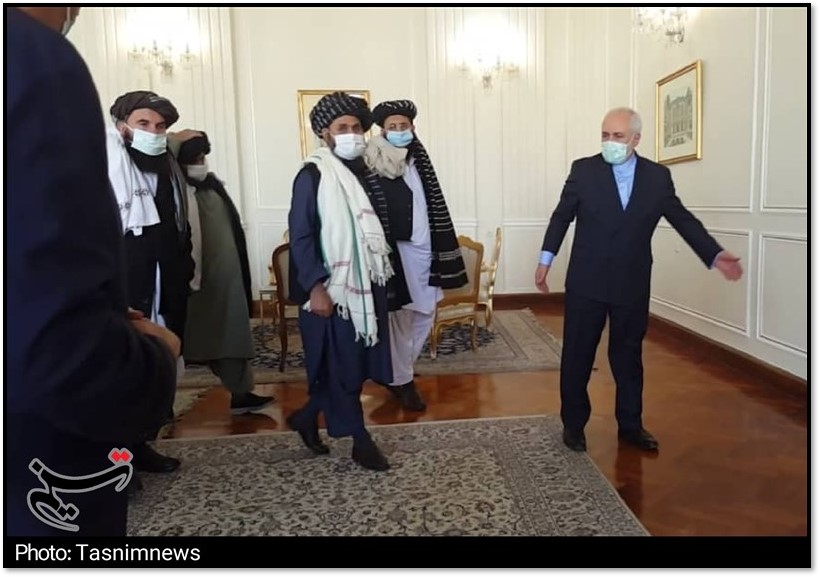
On August 8, the U.N. secretary general’s envoy for Afghanistan, Jean Arnault, met with Zarif in Tehran. They agreed that intra-Afghan talks were the best way to stem the violence between Afghan government forces and the Taliban. Arnault said that Iran and other countries in the region could play a key role in supporting the peace process.
In Washington, State Department Spokesman Ned Price called on Afghanistan’s neighbors to “have a stake in Afghanistan’s future” and “promote the cause of peace…Afghanistan’s neighbors need to play a constructive role. What Iran is trying to do, or is in the process of trying to do by hosting this meeting, may well be constructive. I think the jury is still out,” Price said on July 7.
Iran has had to deal with the spillover from decades of political uncertainty, social chaos and war in Afghanistan: The Soviet occupation between 1979 and 1989; civil war in the 1990s; the Taliban conquest of Kabul in 1996; the U.S.-backed campaign to oust the Taliban in 2001 after the 9/11 attacks; and two decades of tensions between the Taliban and a fragile government. As of 2021, Iran and Afghanistan shared common interests in stabilizing the border and economic trade, but they also had fundamental differences over everything from water resources to religious doctrine. The top six issues for Iran in Afghanistan include:
- Discrimination against the Shiite minority
- Increasing narcotics trafficking
- The flood of refugees and migrants
- Cross-border trade
- Water shortage
- The threat from ISIS-Khorasan
The Shiite Minority
Iran has long supported the Hazaras, a historically oppressed ethnic minority who make up between 10 percent and 20 percent of Afghanistan’s population. Most Hazaras, like most Iranians, are Shiite. They also speak a dialect of Persian. After the 1979 invasion of Afghanistan, Iran aided Hazara mujahideen who fought the Soviets. It has since hosted thousands of Hazara refugees who fled the chaos from years of sequential wars.
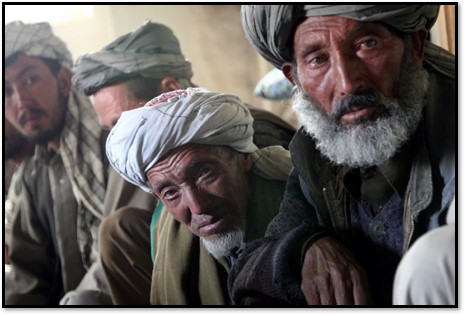
Since 2001, Iran has cultivated influence among the Hazaras by funding cultural and religious activities as well as local media. But it has also enlisted Hazaras to further its regional goals. In 2013, the Islamic Revolutionary Guard Corps (IRGC) began recruiting Hazaras to fight in the new Fatemiyoun militia on behalf of Syrian President Bashar al Assad, a key ally of Iran. Over the next four years, the IRGC deployed up to 50,000 Afghans, mostly refugees who were living in Iran, to Syria. By 2018, many began returning to Iran or Afghanistan. In December 2020, Iranian Foreign Minister Mohammad Javad Zarif suggested that the Afghan government should reconstitute the militia to fight ISIS-Khorasan, the local offshoot of the Islamic State.
Since the first democratic election in 2004, Hazaras have made significant political, economic and social gains. They serve in Parliament; Sarwar Danesh, an Hazara, was elected second vice president in 2014. But Hazara-populated areas remain underdeveloped, and the government has done little to combat widespread social discrimination. Hazaras faced “extortion of money through illegal taxation, forced recruitment and forced labor, physical abuse, and detention,” the State Department reported in 2020. The government “frequently assigned Hazara police officers to symbolic positions with little authority within the Ministry of Interior.” Kabul also deployed Hazara members of the security forces to dangerous parts of the country more often than non-Hazaras, according to NGOs.
The government has also failed to protect Hazaras from persecution by the Taliban and ISIS, rival Sunni extremist groups that consider Shiites apostates. Between 2016 and mid-2021, at least 766 Hazaras were killed in Kabul alone, The New York Times reported. In May 2021, dozens of Hazaras were killed in the bombing of Kabul school for girls. President Ashraf Ghani blamed the Taliban, which denied the claim. Hazara leaders, frustrated with government inaction, assembled their own security force to protect their communities. “People believe the government feels no responsibility for them, so our people must pick up guns and fight,” Mahdi Raskih, a Hazara lawmaker, explained in June 2021. Zulfiqar Omid, a Hazara leader in central Afghanistan, claimed that he had recruited 800 men into self-protection groups. “Hazaras get killed in cities and on highways, but the government doesn’t protect them,” he said.
The Taliban brutally oppressed the Hazara during its rule from 1996 to 2001. It carried out waves of mass killings of Hazaras in 1998, 2000 and 2001. After attacks in 2018 on Hazara areas, the Taliban claimed that it was “not against any specific race, ethnicity or sect” but were “against targets associated with the Kabul administration.” In 2020, the Taliban, which is largely ethnic Pashtun, also attempted to recruit Hazara as fighters. It appointed Mawlawi Mahdi, a Hazara, as the governor of Balkhab district in northern Sar-e-Pul province. The Taliban are “inclusive of all people without any racism” and Shiites are very much a part of their “divine strategy,” Mahdi said in a video in 2020.
In August 2021, the Taliban sent mixed messages on Shiites. On August 17, spokesman Zabihullah Mujahid said that Afghanistan’s new government would be “inclusive.” On the same day, Taliban officials visited a Hazara neighborhood and attended a Shiite mourning ceremony for the death of Hussein ibn Ali, the third imam of Shiites and the Prophet Muhammad's grandson. But on August 17, the Taliban blew up a statue memorializing Abdul Ali Mazari, a Hazara militia leader who fought the group in the 1990s. The Taliban killed Mazari in 1996.
Narcotic Trafficking
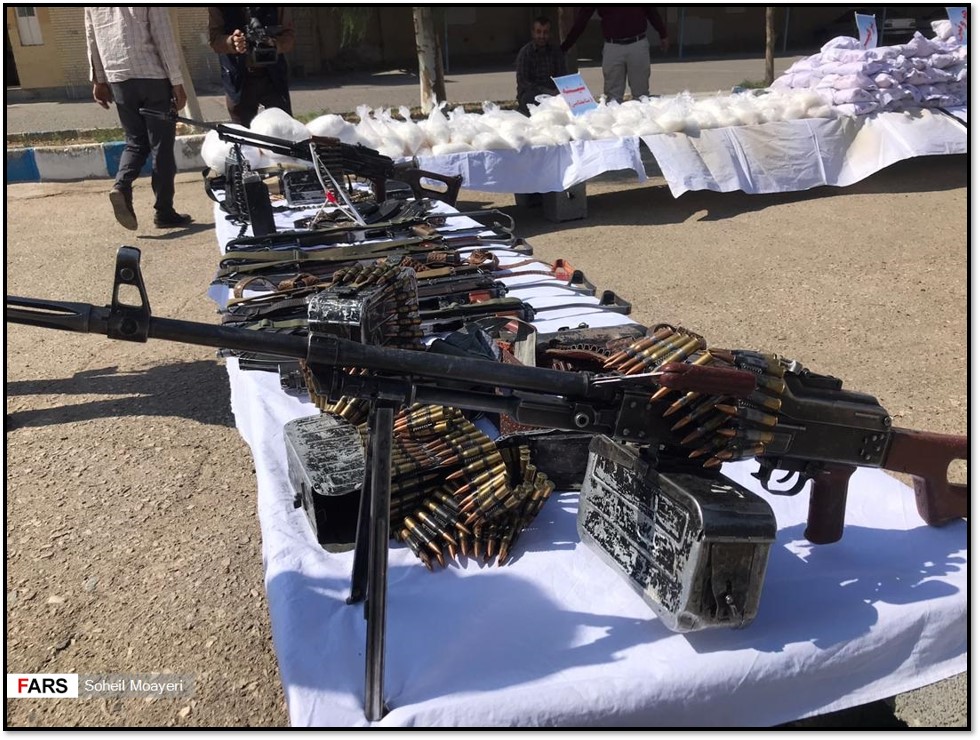
Iran has long blamed the Afghan government and its Western allies for failing to crack down on opium production and drug smuggling. Since 1998, Afghanistan has been the world’s top opiate producer. It supplies some 80 percent of the world’s opium, much of which is smuggled to Iran and on to Europe. Between 1979 and 2014, Iran claims to have lost some 4,000 security forces fighting heavily armed drug traffickers along its eastern border. In 2019, Iran seized more heroin and illicit morphine than any other country, according to U.N. Office on Drugs and Crime. Drug use is a growing domestic problem for Iran too. As of 2020, some 2.8 million Iranians were regular drug users in a population of some 84 million. Another 1.6 million were recreational users. Heroin and opium were the most widely used drugs.
The Taliban has been hypocritical on narcotics. Poppy cultivation expanded during the first few years of Taliban rule in the last 1990s. In 2000, Mullah Omar decreed that opium was un-Islamic. The Taliban subsequently succeeded – sometimes through intimidation or coercion – in cutting poppy cultivation by 90 percent over the next year, according to a U.N. estimate.
After the Taliban were expelled from Kabul, narcotics became a key source of revenue. The Taliban taxed the farmers and traffickers of opium. By 2017, the Taliban were also reportedly involved in processing opium into morphine or heroin as lucrative exports. Afghan officials estimated that the Taliban’s income from the drug trade amounted to $400 million between June 2018 and June 2019. Drug money also helped fund the insurgency against its U.S.-backed government.
Under the democratically elected government, opium cultivation in Afghanistan has increased by nearly 3,000 percent. In 2001, the last year of Taliban rule, some 29 square miles (7,600 hectares) were used to grow opium poppy. By 2020, some 865 square miles (224,000 hectares) were used for growing. The government’s eradication program, with support from the United States and Britain, had largely failed, The Washington Post reported in 2019. Government corruption has further impeded efforts. As of 2021, some 2.5 million Afghans—in a population of 39 million—were reportedly regular drug users.
Refugees and Migrants
Iran has absorbed millions of refugees since the Soviet invasion of Afghanistan in 1979. Afghans have also historically sought seasonal work in Iran. Remittance payments, primarily from undocumented Afghan men, have long been an important part of Afghanistan’s cash-strapped economy. In 2008, a U.N.-commissioned study found that Afghans in Iran were sending home $500 million annually, the equivalent of six percent of Afghanistan’s gross domestic product (GDP).

As of 2020, Iran hosted some 950,000 documented Afghan refugees and at least 2 million more undocumented Afghans. But Iran has repeatedly tried to expel undocumented Afghans. “Iranian forces deport thousands of Afghans summarily, without allowing them the opportunity to prove they have a right to remain in Iran, or to lodge an asylum application,” Human Rights Watch reported in 2013. In 2020, Iran deported more than 375,000 Afghans, according to the U.N. migration agency. In just one week, between June 25 and July 1, 2021, Iran deported 12,363 Afghans.
Many refugees have worked in Iran’s informal sector and did not have steady employment. They have often taken low-paying and hazardous jobs in construction and agriculture sectors. Iran’s alleged mistreatment of refugees and undocumented migrants has long been a contentious issue between Tehran and Kabul. Iran has claimed that the undocumented Afghans are a strain on its economy. In turn, human rights groups claim that Iranian border guards have reportedly harassed, tortured and, in some cases, killed Afghan migrants trying to enter the country illegally.
For decades, Afghan refugees lacked adequate access to basic services, such as education and healthcare. But in 2015, Supreme Leader Ayatollah Ali Khamenei decreed that all Afghan children, documented and undocumented, could attend primary and secondary Iranian schools. In 2016, the government eliminated a fee of $70 to $90 that refugees were required to pay per child. Iran is also “one of only a handful of countries in the world that offer refugees the option to enroll in national health insurance for essential secondary and tertiary public health services in the same way as Iranian nationals,” according to the U.N. Refugee Agency.
By August 2021, Afghans were fleeing to Iran as the Taliban took control of wide swaths of territory. To deal with the influx, Iran set up temporary camps in three border provinces—Razavi Khorasan, South Khorasan and Sistan and Baluchistan. The Afghans were expected “to return when the situation improves,” an Iranian interior ministry official said.
Cross-border Trade
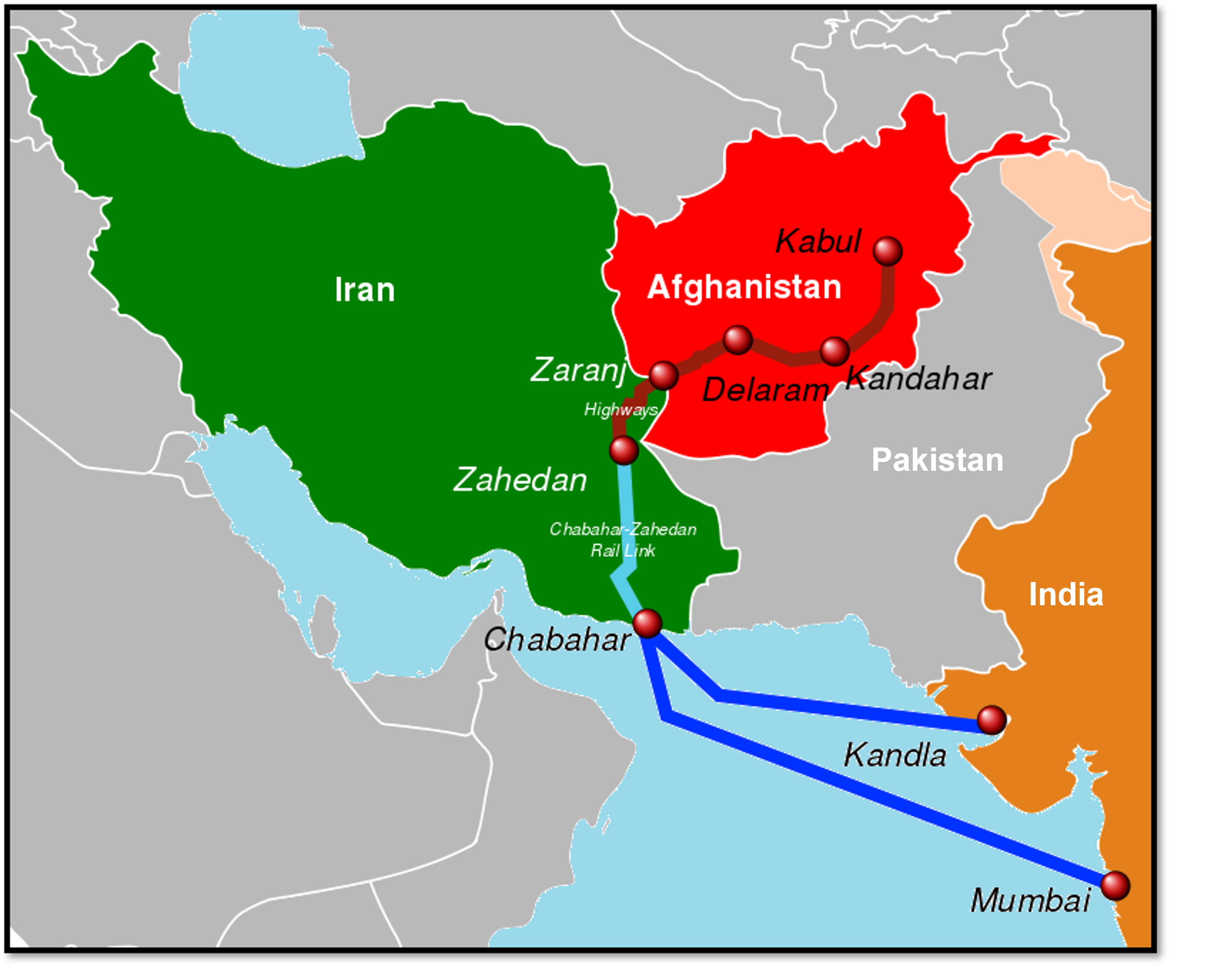
Since 2001, Iran has tried to increase exports to landlocked Afghanistan. In 2017, Iran surpassed Pakistan as Afghanistan’s top trade partner. But trade is largely one-way. In 2019, Iranian exports—including electricity, oil, cement, machinery, metal products, pharmaceuticals, wheat, fabrics and edible oils—totaled $1.24 billion. But Afghan exports to Iran –including fruit, nuts, carpets, cotton and wool – amounted to only $15 million. In 2020, Iranian and Afghan leaders inaugurated the first railway link between their countries. Iran funded construction of the 90-mile (140 kilometer) line from Khaf in northeastern Iran to Ghoryan in western Afghanistan; the line is designed to eventually extend the railway another 53 miles to Herat, in western Afghanistan.
Iran also views Afghanistan as a transportation route to expand economic ties with Central and South Asian countries. Afghanistan, in turn, sees Iran as a conduit for seaborne exports and imports. In April 2016, Iran, Afghanistan and India signed an agreement to develop the Chabahar port in southeastern Iran as a trading hub for all three nations. One of the agreement’s most important goals has been to create a trading route to circumvent Pakistan. Afghan goods would be transported to the Iranian port by rail, and then be shipped to India by sea. India could also export goods to Afghanistan—and beyond to Central Asia— using the same route. The first phase of the port was inaugurated in 2017, but progress on Iran’s only port with access to the Indian Ocean has slowed, largely due to U.S. sanctions. Even though Chabahar was exempted from U.S. sanctions, investors remained wary of the project.
In 2019, Afghanistan began to export goods via Chabahar to India. “Chabahar port is the result of healthy cooperation between India, Iran and Afghanistan this will ensure economic growth,” President Ashraf Ghani said at the 2019 inauguration of the new export route.
In August 2021, Iran and Afghanistan continued cross-border trade despite the chaotic security situation, according to Ruhollah Latifi, the spokesman for Iran’s customs administration. Trade was only disrupted at the Milak border crossing in Sistan and Baluchistan province.
Water Dispute
For decades, water resources have been a point of contention between Iran and Afghanistan. The Helmand River is basic source of water as it flows from the mountains of the Hindu Kush through Afghanistan into southeastern Iran, where it is critical for agriculture, fishing and human consumption. The problem in modern times dates to the 1940s and 1950s, when Afghanistan built two dams—the Kajaki and the Grishk—on the Helmand River which could curtail water flow into Iran. In 1973, the two countries signed a treaty on sharing water resources, which focused heavily on distribution of water from Helmand River, but the accord was neither ratified nor implemented. In February 2021, Iran and Afghanistan signed an agreement based on the 1973 treaty, but disputes over dams remained unresolved.
Both nations have faced periodic droughts, which has sparked tensions between the two countries. From 1998 to 2001, the Taliban closed the sluices of the Kajaki Dam to cut off water to Iran during a drought. Since 1945, sequential Afghan governments, including the Taliban, have built, repaired or upgraded dams on the Helmand, including the Kamal Khan dam that curtailed the flow of water to Iran. When the dam was completed in March 2021, Afghan President Ashraf Ghani said that Afghanistan would stop allowing extra water to flow to Iran for free and would instead trade water for oil.
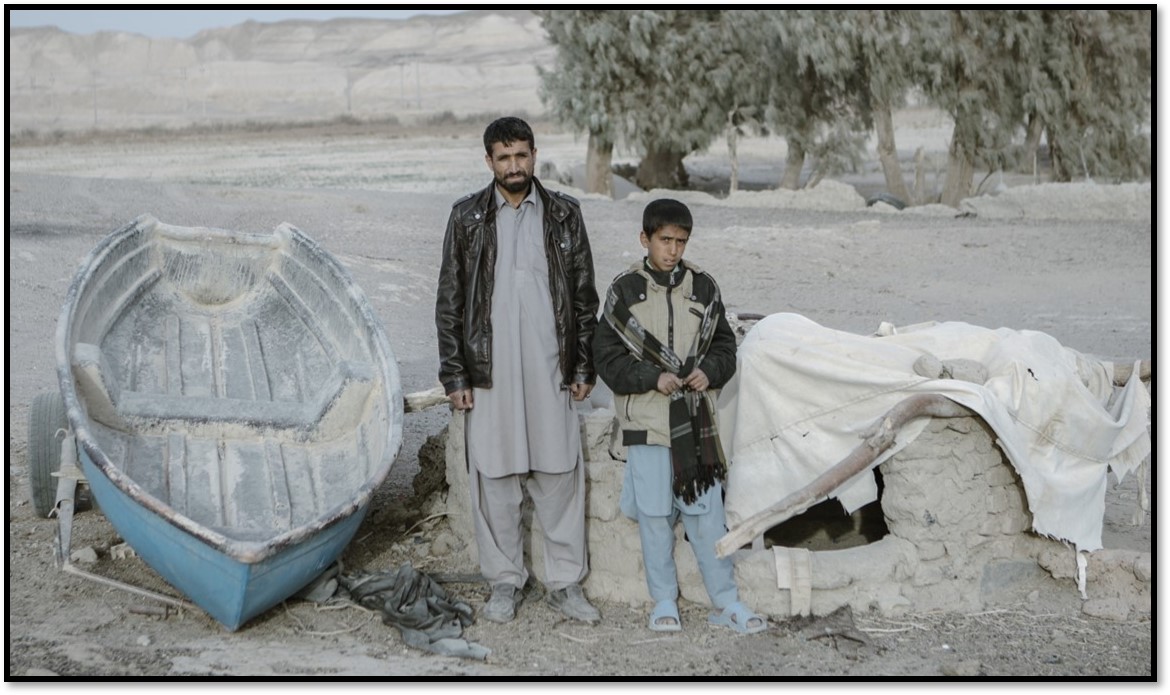
Iranian officials have blamed the Helmand River's declining water flow on Afghanistan’s dam projects, although droughts have also played a key role. Since the early 2000s, parts of the Helmand River in Iran have been dry for up to 10 months of the year. “We cannot remain indifferent to what is damaging our environment,” President Hassan Rouhani said in 2017. “The construction of several dams in Afghanistan – the Kajaki, Kamal Khan and Selma dams and other dams in the north and south of Afghanistan – impacts our Khorasan and Sistan and Baluchistan provinces.”
The dams have further imperiled the Hamoun wetlands, which span Iran and Afghanistan. About two-thirds of the wetlands, which include three lakes, are within Iran and, for thousands of years, provided local communities with water. In 2000, the Hamoun wetlands, which covered 2,185 square miles, were the world’s seventh largest wetland. But by 2004, they had largely dried up due to drought and inefficient use of water.
The Islamic State-Khorasan (ISIS-K)

Iran and Afghanistan share a deep concern about ISIS-Khorasan since the new branch of the Islamic State emerged in Afghanistan in 2015. ISIS-K has targeted Shiites in Afghanistan, which is a concern for Iran too. In 2020, ISIS-K gunmen allegedly killed 16 people, including infants, at a maternity hospital in a mostly Hazara neighborhood in Kabul.
Tehran reportedly expanded its outreach to the Taliban after the new jihadi group attacked both Afghan government and the Taliban, an ideological rival. In 2016, Taliban leader Mullah Akhtar Mohammad Mansour secretly visited Iran for talks with the government; he was killed in a U.S. drone strike as he returned to Pakistan. In 2018, Ali Shamkhani, the secretary of Iran’s Supreme National Security Council, acknowledged that Iran had conducted talks with the Taliban and emphasized the threat from ISIS-K.
Garrett Nada is the managing editor of The Iran Primer at the U.S. Institute of Peace.
